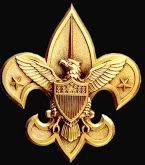The site of my Eagle Project was the Hugh A. Doyle Senior Center located at 94 Davis Avenue in New Rochelle New York. My project consisted of building 4 raised-bed gardens, or victory gardens. Each garden is raised about 2 feet above the ground. This makes it easier for the senior citizens to reach the gardens, as opposed to having to reach all the way to the ground.
To build each garden, we had to dig down between 8 inches to 1 foot and lay the first railroad tie in the ground and secure it with 3 pieces of rebar. After this, the subsequent railroad ties had to be laid down as to make sure that they would fit together when secured. Next, any last minute cuts were made, and after we were sure
that they would fit together, they were taken down, and we then drilled one hole on each end, and one in the middle. The railroad ties were then stacked again in the same order, and the holes were lined up to allow the rebar to be pounded thru all 6 railroad ties at once.
Once all the rebar was in place, we then drilled 2 more holes vertically thru each of the sides of the victory garden. Spikes were then driven thru these holes to ensure the victory gardens were secure. This process was then repeated 3 more times, and the gardens were filled with dirt and peat moss. After the completion of the gardens, a path was dug between the gardens in the shape of a cross, and leading to the back door of the Doyle Center. This path was then filled with wood chips to allow wheelchair access.
At the same time as all that was mentioned above, 10 picnic tables and 9 free- standing benches were being scraped and stripped of their paint with painter’s razors, paint stripper, and other tools. Once stripped, the picnic tables and benches were sanded with steel wool and sandpaper. Once smooth, the tables were painted blue, and let to dry. Another coat was then applied to all surfaces. After all else was done, the shuffleboard court was then painted. This was done by taping beside the lines to be painted as to not spill or paint where paint was not needed. The lines and numbers were then painted, left to dry, and repeated.
One hurdle that I had to overcome in the planning and execution of my project was the fact that a month before my project was to commence, the troop that I was currently in was dismantled. This was concerning because I was not sure what level of support I would receive from my new troop and how they would take to a Life Scout coming into their troop. This proved to work out in the end however because Troop 11 took me in with open arms and all of its scouts and parents were more than willing to lend their support, knowledge, and time.
Because everyone was so eager to show their support, my Project was carried out over 3 weekends and totaled 303 hours. Over 40 people came to help with the project for one or more days. Including planning hours, the project time totaled 336 hours.
